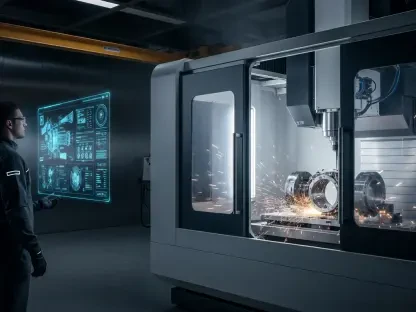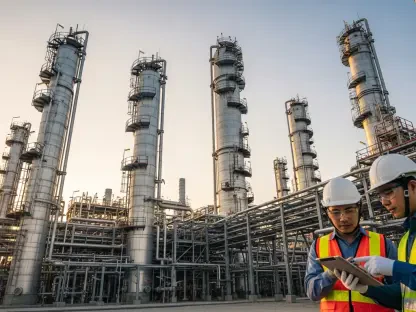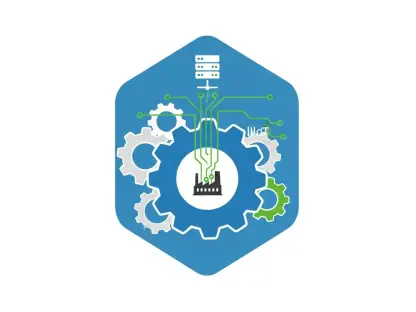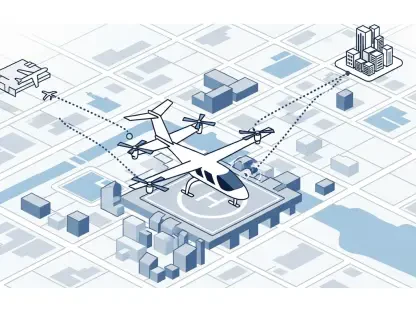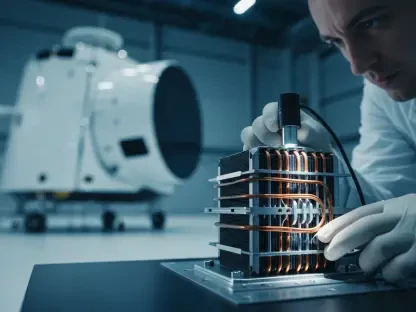Imagine an industry with the potential to soar to global heights, yet tethered by outdated practices and manual processes that stifle its growth, a reality facing India’s aerospace sector today. This field, brimming with opportunity, is in dire need of transformation. At a recent symposium hosted by the Indian Foundation for Quality Management (IFQM), industry leaders gathered to address this pressing challenge, spotlighting digitization as the critical engine for propelling India into the ranks of global manufacturing hubs. The event, marked by insightful discussions and visionary strategies, underscored an urgent call to modernize, with key figures like Banmali Agarwala, Chairman of Tata Advanced Systems (TAS), leading the charge. This coverage delves into the highlights of the symposium, exploring how digital innovation could redefine the trajectory of Indian aerospace.
Unveiling the Digital Imperative in Aerospace
The IFQM symposium served as a pivotal platform for dissecting the state of India’s aerospace industry, with a clear consensus emerging on the need for a technological overhaul. Banmali Agarwala set the tone with a compelling address, pointing out that the sector’s reliance on antiquated, non-digital methods—such as old-fashioned drawings—severely hampers efficiency. He emphasized that without embracing modern tools, scaling operations to meet international demands remains a distant dream, positioning digitization as not just an option but a necessity.
Beyond identifying the problem, the event highlighted the broader implications of staying rooted in outdated systems. Agarwala noted that current practices limit the industry’s ability to move from producing a handful of prototypes to achieving large-scale manufacturing. This gap, evident in projects like the Tejas aircraft, illustrates a critical barrier to competitiveness on the world stage, sparking discussions on how digital solutions could bridge this divide and unlock untapped potential.
Key Moments from the Symposium Discussions
Modernization at the Forefront: Agarwala’s Vision
Agarwala’s speech was a clarion call for modernization, resonating deeply with attendees as he dissected the inefficiencies plaguing aerospace processes. He painted a stark picture of an industry constrained by manual methods, where incremental updates to legacy platforms fail to keep pace with global standards. His argument centered on the transformative power of digital tools to streamline workflows, advocating for a shift that could redefine operational capacity.
The TAS Chairman also drew attention to the competitive disadvantage of limited production runs. Highlighting the need to transcend small-scale outputs, he urged stakeholders to adopt systems that facilitate mass production. This perspective underscored a broader theme of the symposium: that digitization is the linchpin for turning India’s aerospace ambitions into tangible, globally recognized achievements.
Strategies for Global Dominance in Panel Talks
A panel discussion on positioning India as a leader in aerospace manufacturing brought further depth to the event, with experts aligning on the role of digitization in supply chain optimization. Agarwala contributed significantly, stressing that digital integration is essential for managing complex logistics and ensuring scalability. The conversation revealed a shared understanding that modernized processes are non-negotiable for meeting the rigorous demands of international markets.
Participants also explored the challenges of aligning domestic capabilities with global expectations. The consensus was clear—without digital frameworks, inefficiencies in production and coordination would continue to hinder progress. This dialogue illuminated strategic pathways, suggesting that investments in technology could position India as a formidable player in the aerospace arena over the coming years.
Building Technological Independence through Workshops
Workshops held during the symposium offered a hands-on exploration of technological self-reliance, a recurring theme in the discussions. Agarwala and other industry voices highlighted the critical need for Indian firms to not just import technology but to absorb and innovate upon it. This focus on domestic expertise sparked engaging debates among attendees about reducing reliance on foreign solutions for sustainable growth.
These interactive sessions emphasized actionable steps toward building a robust innovation ecosystem within the country. Participants discussed fostering local talent and infrastructure to adapt global technologies to India-specific needs. The energy in the room reflected a collective determination to cultivate independence, ensuring that the aerospace sector could stand on its own in the long term.
Digital Innovations Showcased as Game-Changers
The event also featured exhibitions of cutting-edge digital solutions tailored for aerospace challenges, providing a glimpse into potential game-changers. Concepts and tools on display demonstrated how technology could dismantle entrenched inefficiencies, aligning with Agarwala’s vision of a modernized industry. These innovations ranged from digital design platforms to automated supply chain systems, each promising to enhance productivity.
Attendees witnessed firsthand the relevance of such advancements in addressing the sector’s pain points. The showcased solutions offered practical ways to transition from manual processes to streamlined operations, reinforcing the symposium’s core message. This segment of the event served as a powerful reminder of technology’s role in catapulting India toward global standing in aerospace manufacturing.
Long-Term Horizons: Digitization’s Role in Aerospace Ambitions
The symposium wrapped up with a forward-looking perspective on how digitization could shape India’s aerospace future. Discussions reiterated that scaling operations and optimizing supply chains hinge on adopting digital frameworks, a point Agarwala championed throughout the event. This technological shift is seen as a cornerstone for aligning the industry with international benchmarks over the next few years, starting from now until 2027.
Beyond immediate gains, the event underscored the importance of reducing dependency on imported technologies through homegrown innovation. The insights shared painted a picture of an industry poised for transformation, provided stakeholders commit to digital integration. This strategic vision ties into broader trends of self-reliance and competitiveness, setting a clear direction for India to emerge as a credible manufacturing hub on the global stage.
Reflecting on a Transformative Gathering
The IFQM symposium proved to be a landmark event, bringing into sharp focus the indispensable role of digitization in elevating India’s aerospace sector. The powerful exchanges, led by visionaries like Banmali Agarwala, laid bare the challenges of outdated systems while charting a path toward modernization. Each session, from panel talks to workshops, contributed to a unified narrative of urgency and opportunity.
Looking ahead, the industry must prioritize investments in digital infrastructure to turn these discussions into reality. Collaborations between public and private entities could accelerate the adoption of innovative tools, while targeted policies might foster an environment for technological independence. As the echoes of the symposium linger, the next steps involve sustained commitment to these strategies, ensuring that India’s aerospace aspirations take flight on the wings of digital progress.


